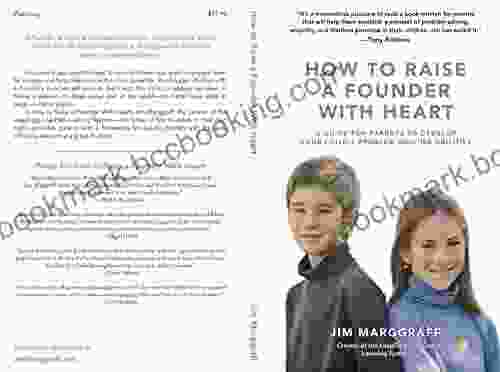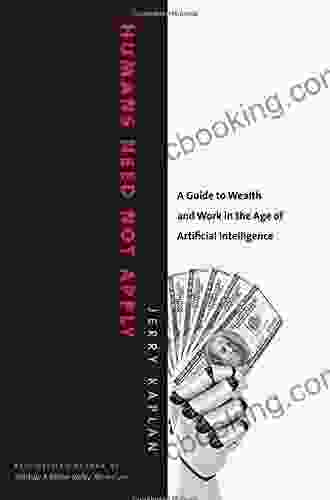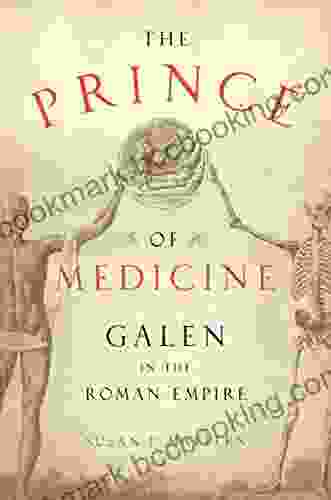Humans Need Not Apply: The Future of Automation

We are on the cusp of a technological revolution that is poised to transform our world in ways that are both exciting and terrifying. Artificial intelligence (AI) is rapidly advancing, and its potential for automating tasks once thought to be uniquely human is growing exponentially.
4.2 out of 5
| Language | : | English |
| File size | : | 735 KB |
| Text-to-Speech | : | Enabled |
| Screen Reader | : | Supported |
| Enhanced typesetting | : | Enabled |
| Word Wise | : | Enabled |
| Print length | : | 258 pages |
| Lending | : | Enabled |
In their groundbreaking book, Humans Need Not Apply, authors Jerry Kaplan and George Webster paint a vivid picture of the future of automation and its implications for humanity.
Kaplan and Webster argue that we are entering a new era of economic growth, but that this growth will not be driven by the creation of new jobs. Instead, they believe that automation will eliminate millions of jobs in the coming decades, and that this will have a profound impact on our society.
The authors do not shy away from the potential negative consequences of automation. They discuss the possibility of widespread unemployment, social unrest, and even economic collapse.
However, Kaplan and Webster also believe that automation can be a force for good. They argue that it can free us from mundane and repetitive tasks, allowing us to focus on more creative and fulfilling endeavors.
They also believe that automation can help us to solve some of the world's most pressing problems, such as climate change and poverty.
Ultimately, Kaplan and Webster believe that the future of automation is uncertain. They argue that it is up to us to decide how we will use this technology, and that the choices we make will shape the world that we live in.
Humans Need Not Apply is a must-read for anyone who is interested in the future of automation and its implications for humanity.
The Implications of Automation
The implications of automation are vast and far-reaching. Here are just a few of the potential consequences:
- Unemployment: Automation is likely to eliminate millions of jobs in the coming decades. This will have a profound impact on the global economy and on the lives of workers.
- Social unrest: Widespread unemployment can lead to social unrest and instability. In some cases, it can even lead to violence.
- Economic collapse: The loss of millions of jobs could lead to a decline in economic growth and even to financial collapse.
- New opportunities: Automation can also create new opportunities for workers and businesses. By freeing us from mundane and repetitive tasks, it allows us to focus on more creative and fulfilling endeavors.
- Solving world problems: Automation can also help us to solve some of the world's most pressing problems, such as climate change and poverty.
The Future of Automation
The future of automation is uncertain. It is up to us to decide how we will use this technology, and the choices we make will shape the world that we live in.
Kaplan and Webster offer some suggestions for how we can prepare for the future of automation. They argue that we need to invest in education and training programs, and that we need to develop social safety nets to help workers who are displaced by automation.
They also believe that we need to have a public debate about the future of automation, and that we need to make informed decisions about how we will use this technology.
Humans Need Not Apply is a timely and thought-provoking book that provides a roadmap for the future of automation and its implications for humanity.
Automation is a powerful technology that has the potential to transform our world. It is important to understand the potential benefits and risks of automation, and to make informed decisions about how we will use this technology.
Humans Need Not Apply is a must-read for anyone who is interested in the future of automation and its implications for humanity.
**Alt text for images:**
* **Image 1:** A graph showing the exponential growth of AI. * **Image 2:** A photo of a robot working in a factory. * **Image 3:** A photo of a group of people working together on a project.
4.2 out of 5
| Language | : | English |
| File size | : | 735 KB |
| Text-to-Speech | : | Enabled |
| Screen Reader | : | Supported |
| Enhanced typesetting | : | Enabled |
| Word Wise | : | Enabled |
| Print length | : | 258 pages |
| Lending | : | Enabled |
Do you want to contribute by writing guest posts on this blog?
Please contact us and send us a resume of previous articles that you have written.
 Book
Book Novel
Novel Page
Page Chapter
Chapter Text
Text Story
Story Genre
Genre Reader
Reader Library
Library Paperback
Paperback E-book
E-book Magazine
Magazine Newspaper
Newspaper Paragraph
Paragraph Sentence
Sentence Bookmark
Bookmark Shelf
Shelf Glossary
Glossary Bibliography
Bibliography Foreword
Foreword Preface
Preface Synopsis
Synopsis Annotation
Annotation Footnote
Footnote Manuscript
Manuscript Scroll
Scroll Codex
Codex Tome
Tome Bestseller
Bestseller Classics
Classics Library card
Library card Narrative
Narrative Biography
Biography Autobiography
Autobiography Memoir
Memoir Reference
Reference Encyclopedia
Encyclopedia Jeremy Rifkin
Jeremy Rifkin Jennifer Mcmahon
Jennifer Mcmahon Jeffrey M Wooldridge
Jeffrey M Wooldridge Jill Culiner
Jill Culiner Michael N Mitchell
Michael N Mitchell Kiyoshi Takahashi
Kiyoshi Takahashi Jessica Bohrer
Jessica Bohrer Max Lugavere
Max Lugavere Jim Cole
Jim Cole Jeremy Griffith
Jeremy Griffith Nita Sweeney
Nita Sweeney Jesse Braun
Jesse Braun Jim Collins
Jim Collins Jennifer Estep
Jennifer Estep Traci Chee
Traci Chee Jenn Wisbeck
Jenn Wisbeck Jeison Cosmas
Jeison Cosmas Jenna Fischer
Jenna Fischer Michael Song
Michael Song Lejuan James
Lejuan James
Light bulbAdvertise smarter! Our strategic ad space ensures maximum exposure. Reserve your spot today!

 George Bell101 Endometriosis Tips For Men: A Comprehensive Guide for Partners and Loved...
George Bell101 Endometriosis Tips For Men: A Comprehensive Guide for Partners and Loved... Dan HendersonFollow ·2.2k
Dan HendersonFollow ·2.2k Michael ChabonFollow ·18.9k
Michael ChabonFollow ·18.9k Harry HayesFollow ·12k
Harry HayesFollow ·12k Bruce SnyderFollow ·16.8k
Bruce SnyderFollow ·16.8k Cameron ReedFollow ·11.6k
Cameron ReedFollow ·11.6k Ricky BellFollow ·17.9k
Ricky BellFollow ·17.9k Julio CortázarFollow ·16.3k
Julio CortázarFollow ·16.3k Vernon BlairFollow ·7.9k
Vernon BlairFollow ·7.9k

 Patrick Rothfuss
Patrick RothfussGuide for Parents: Unlocking Your Child's Problem-Solving...
As a parent, you...

 Ignacio Hayes
Ignacio HayesThe Good Girls of Al Noor: A Gripping Tale of Hope and...
On March 15, 2019, a...

 Lee Simmons
Lee Simmons50 Games and Activities for All the Turkeys at Your...
Thanksgiving is a time for family, friends,...

 Sean Turner
Sean TurnerRewiring the World: From Edison to Google - The...
A Captivating...
4.2 out of 5
| Language | : | English |
| File size | : | 735 KB |
| Text-to-Speech | : | Enabled |
| Screen Reader | : | Supported |
| Enhanced typesetting | : | Enabled |
| Word Wise | : | Enabled |
| Print length | : | 258 pages |
| Lending | : | Enabled |














